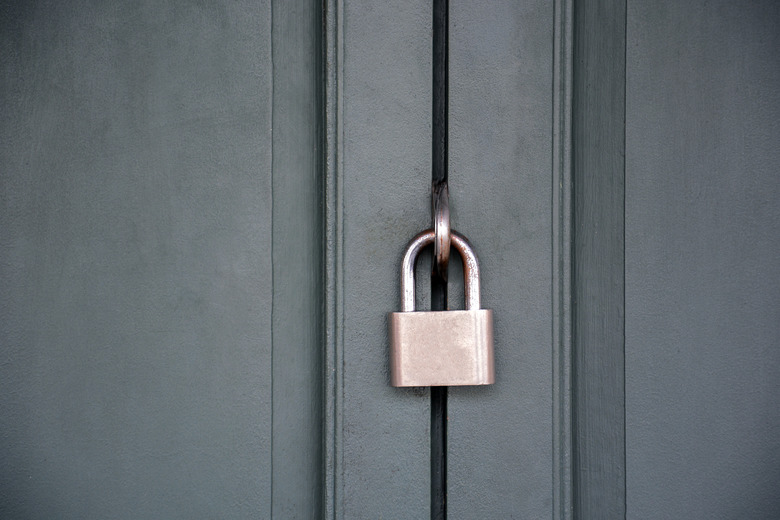How To Open A Broken Padlock
We may receive a commission on purchases made from links.
If you use padlocks to secure anything you own, from the contents of your gym locker to your backyard tool shed, it's almost certain that you'll eventually have to open a broken padlock. They're simple, reliable, well-proven devices as a rule, but time, corrosion, and faults in workmanship can eventually take their toll, especially if your lock is exposed to the elements. There are several ways to approach the task, depending on the situation and the tools you have at your disposal.
Make Sure Your Lock Is Broken
Make Sure Your Lock Is Broken
An obvious first step is to make sure your lock is actually broken and not simply misbehaving due to dirt or corrosion. If there's visible dirt or debris in the lock's mechanism, use a can of compressed air — the kind sold for cleaning electronics or camera lenses — to try and blow it out. For larger pieces of dirt or debris, you might also be able to pick them out with the tip of a needle or safety pin.
If corrosion appears to be the problem, try spraying a lubricant into the lock's mechanism. Graphite spray works well, but be sure the end of the little straw-like nozzle is inside the lock before you push the button or you'll get fine black powder (like copier toner) everywhere. Popular spray-oil lubricants also work well, and you're more likely to have a can of that already on hand. Wait a few minutes for the lubricant to penetrate; then try your key again. You may need to apply lubricant a few times before the lock will work.
Tip
Professional locksmiths sometimes warn against using oil-type lubricants because as they age they become gummy and may themselves become a problem in the future. Realistically, you should replace the lock once it's been opened so this won't be an issue because the problem is likely to recur.
Shim Open a Malfunctioning Lock
Shim Open a Malfunctioning Lock
The U-shaped part of your lock, called the shackle, has a notch at the end. Many padlocks (especially inexpensive ones) lock it in place by moving a latch (or pawl) to fill that notch. If the pawl won't move because the lock is corroded or simply because it's new and the mechanism is stiff, you can open it by using shims to move the pawl from the notch.
Shims are thin pieces of metal that can fit into the space between the shank and the body of the lock. You can buy them, but small flat-head screwdrivers will work just as well. There's a gap between the shackle and the body, and it will be wider on one side than the other. Slide your shim into that side and press down (or tap gently with a small hammer) until the pawl releases. If this doesn't work, use two shims: slide one into the side with the narrower gap, then insert the second one into the side with the wider gap. Press or tap them into place until the lock opens. If you think the lock is basically functional but just new and stiff, insert the key and turn it repeatedly until the mechanism moves freely.
Open a Broken Padlock Destructively
Open a Broken Padlock Destructively
If saving the lock isn't a priority, you have several options for cutting or breaking one open. These include:
Using a bolt cutter. If you have a bolt cutter or can borrow one, you can cut the shank of most padlocks (the longer the handles, the easier it'll be). Some better-quality padlocks lock on both sides of the shank, so you'll need to cut twice in order to remove those.
Using a grinder or hacksaw. An old-school hacksaw will eventually remove a lock if you have patience and a good blade. If you have access to a powered grinder, that will do the job much more effectively.
Drilling out the lock. If you don't have a grinder but do have a drill and hardened steel bits, you can drill out the cylinder containing the lock mechanism. If you find your bit gets stuck (i.e., your drill doesn't have the necessary torque) switch to a smaller bit and then increase the size step by step until the lock releases.
Warning
Always use appropriate personal protective equipment (PPE) when removing the lock. This usually includes protective gloves and safety glasses, and in the case of power tools, ear protection may also be advisable.
